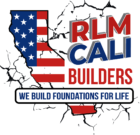How to Keep an Eye on Fractured Foundations
Cracks and fissures that are less than 1.5 millimeters broad or the width of a penny are extremely common in concrete, stone, brick, and masonry block foundation walls and cement floors. However, these types of cracks and fissures typically do not need any kind of repair work and should be ignored. The natural settling of the structure, which often takes place within the first few years following construction, is responsible for the bulk of these tiny, tight fractures. Cracks larger than 1.5 millimeters should be covered with cement mortar, caulk, or cement paint. This will help prevent water from entering the structure and will also make monitoring easier. Because flexible caulk bends and does not disclose continuous movement, you should not use it to seal fissures that you wish to monitor because it could compromise your ability to do so.
Discover How to Keep an Eye on Foundation Cracks!
Fillers for Cracks in Masonry
If a crack in masonry is fixed with a hard masonry patching compound, then any major future movement will almost likely express itself as a new crack in the patched location. This is true regardless of whether the crack is horizontal, vertical, or diagonal (or nearby). Bear in mind that some types of masonry materials will contract as they dry and cure; ensure that you do not mistake a patch shrinkage crack for movement throughout the structure. A fantastic alternative is a grout that does not contract when it dries. If a crack in the foundation is allowing water to seep through, rather than passively monitoring the situation, you should take steps to fix the problem.
If a crack has been sealed or filled in with paint, caulk, or mortar and you discover that the crack has re-cracked, or the crack has opened up or grown wider (and it isn’t due to the shrinking of the filler product), then there is movement, and it should be considered, even if the movement is minimal. Cracks in the foundation that continue to move should be looked into because there is a possibility that they may need to be repaired. After the major cracks, those with a diameter of 6.5 millimeters (or more than 1/4 inch), have been sealed, continue to monitor them to ensure that they do not reopen.
Movement of Measurement and Documentation Foundation:
There is a possibility that the appearance of fractures in the masonry foundation is neither the only nor even the most essential symptom of foundation movement. If a foundation wall is leaning, bending, or bowing, the tension may have resulted in a number of minor width cracks. However, these cracks may not correctly represent the total amount of movement that has occurred in the foundation.
Examination Of Fractions In The Foundation
Examine the nature of the crack as well as its severity. Determine in which direction the cracks are going and where they are at their largest point.
Find out what the most likely cause is. It might be decay or incorrect use of the materials.
-Structural failure.
-Cracks that run horizontally or diagonally near the ground at piers in long walls: these are caused by horizontal movement. -Cracks that run vertically close to the ends of walls.
Make an appointment for a Foundation Inspection Near Me Hermosa Beach with RLM Retrofit Foundation, and one of our trained professionals will assist you in determining the most effective safeguards that are now available for your home. Get in touch with RLM Retrofit Foundation right away if you have any questions or concerns regarding foundation repair.
Five foundation types Hermosa Beach
In terms of the building structure, what exactly is a slab foundation Hermosa Beach










